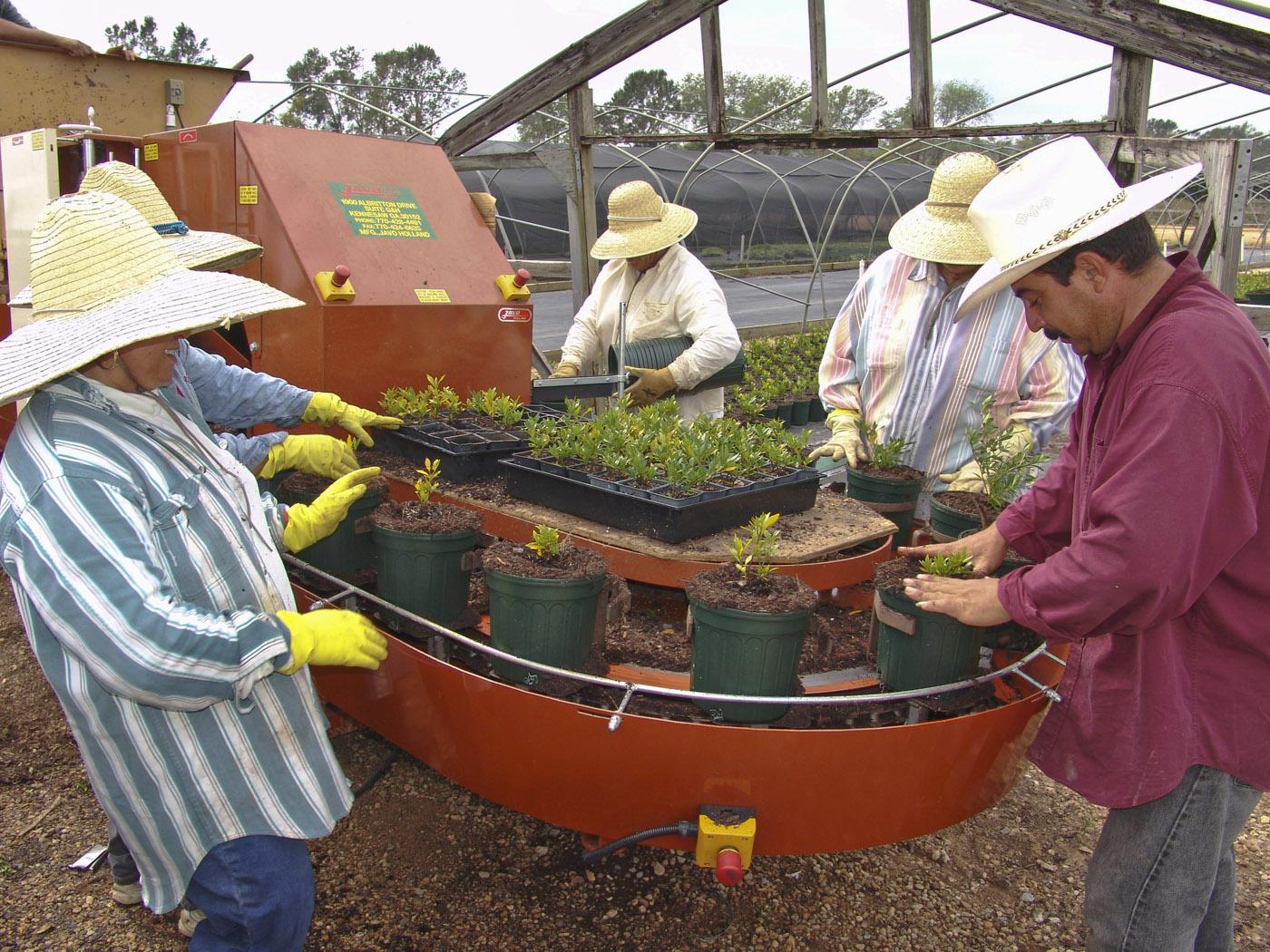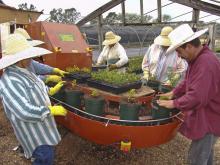Information Possibly Outdated
The information presented on this page was originally released on April 9, 2009. It may not be outdated, but please search our site for more current information. If you plan to quote or reference this information in a publication, please check with the Extension specialist or author before proceeding.
Machines improve work at greenhouses, nurseries
By Karen Templeton
MSU Ag Communications
MISSISSIPPI STATE – A new Mississippi State University study shows that when it comes to horticulture, the right combination of machinery and human laborers can cultivate positive results for this growing industry.
Many jobs in the nursery and greenhouse industry are labor-intensive and physically demanding. To improve production and prevent worker injuries, the industry is turning to mechanization and automation. Mechanization is the replacement of human tasks with machines. Automation is a larger process that involves the use of various mechanized systems in a facility.
Researchers with the Mississippi Agricultural and Forestry Experiment Station and MSU’s Extension Service conducted a study measuring the socioeconomic impact of automation and mechanization. They looked at sales, employment, workers’ earnings, safety and worker retention in nurseries and greenhouses in the northern Gulf of Mexico region. Researchers collected data through personal interviews with 87 randomly selected nurseries and greenhouses in Mississippi, Alabama and Louisiana.
“There needs to be continuous improvements in the work force and processes for the industry to succeed,” said Ben Posadas, MSU associate Extension and research professor and the study’s lead investigator. “We aimed to develop a socioeconomic profile of horticulture workers and specifically look at how new technology affects nursery and greenhouse work force operations.”
Researchers found that a significant number of participating nurseries used new technology for filling containers, moving containers from potting to transport, transporting containers to fields, pruning plants and applying chemicals. A small number of businesses participating in the survey used technology for tasks such as cutting and seed collecting, placing plant liners, planting seed, harvesting and grading production.
Study results showed that adding new systems to increase efficiency did not displace any workers but instead improved workers’ total earnings. Researchers also found that businesses taking advantage of mechanization and automation had higher sales.
Jeff Howell, owner of Rocky Creek Nursery in Lucedale, said mechanization has improved his operations.
“This business is very labor-intensive, but machines have made some of our processes easier,” Howell said. “We use potting machines and a conveyer system to move material from potting machines to the rows.”
Howell said the technology takes over some of the more strenuous tasks.
“The machines have made drastic improvements for our workers,” he said. “We do not have to do as much stooping down or lifting of heavy containers.”
Dan Batson, owner of GreenForest Nursery in Perkinston, agreed with Howell. Batson and his staff use pot-filling machines and a low trailer to move plant materials for shipping.
“Finding and using new technology has made our operations more efficient and boosts employee morale,” Batson said. “Workers are less burdened with bending over and carrying heavy materials.”
Study results also indicate that automation and mechanization enable businesses to hire more workers with less horticulture experience.
“With the use of technology, there is less need for the workers to be as skilled in horticulture,” Posadas said. “We did not find, however, that there was any impact on the time it took to train new workers or retain them.”
The key, said Posadas, to maintaining current work forces in the industry is creating good worker conditions.
“This can be achieved through providing benefits and a safe work environment and also by improving their productivity through the adoption of mechanized or automated systems,” Posadas said.






